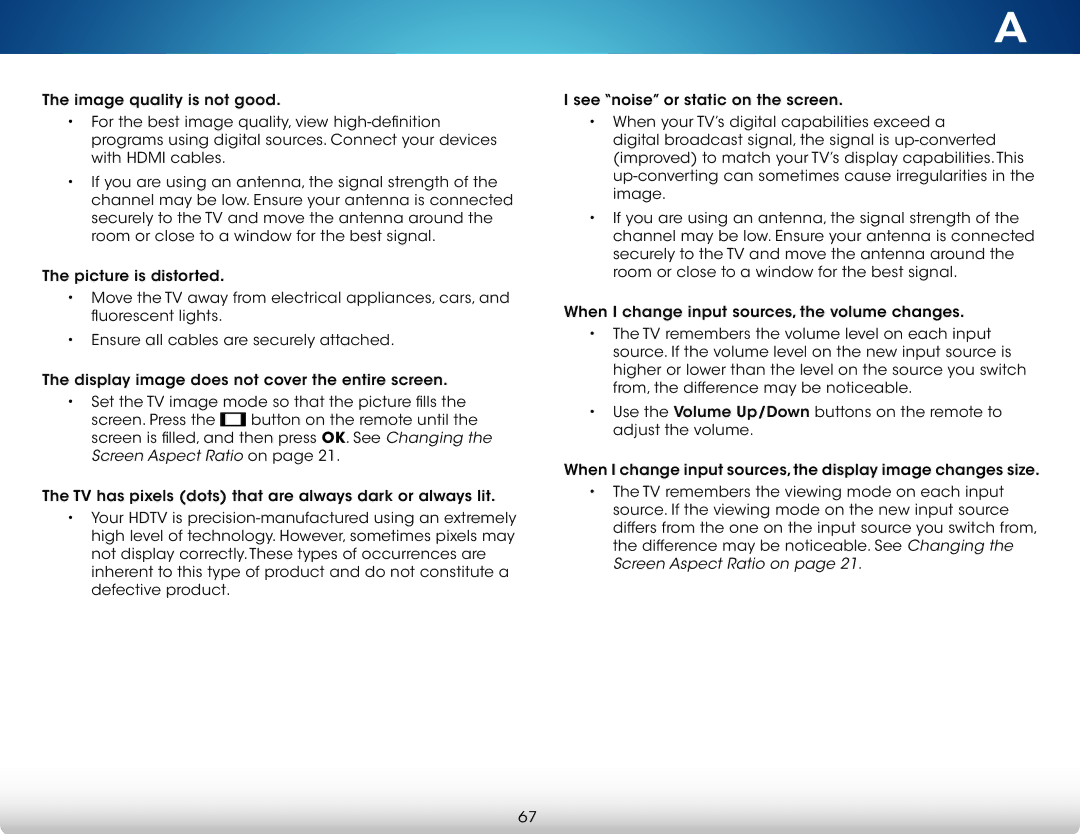
The image quality is not good.
•For the best image quality, view
•If you are using an antenna, the signal strength of the channel may be low. Ensure your antenna is connected securely to the TV and move the antenna around the room or close to a window for the best signal.
The picture is distorted.
•Move the TV away from electrical appliances, cars, and fluorescent lights.
•Ensure all cables are securely attached.
The display image does not cover the entire screen.
•Set the TV image mode so that the picture fills the
screen. Press the ![]() button on the remote until the screen is filled, and then press OK. See Changing the Screen Aspect Ratio on page 21.
button on the remote until the screen is filled, and then press OK. See Changing the Screen Aspect Ratio on page 21.
The TV has pixels (dots) that are always dark or always lit.
•Your HDTV is
A
I see “noise” or static on the screen.
•When your TV’s digital capabilities exceed a digital broadcast signal, the signal is
•If you are using an antenna, the signal strength of the channel may be low. Ensure your antenna is connected securely to the TV and move the antenna around the room or close to a window for the best signal.
When I change input sources, the volume changes.
•The TV remembers the volume level on each input source. If the volume level on the new input source is higher or lower than the level on the source you switch from, the difference may be noticeable.
•Use the Volume Up/Down buttons on the remote to adjust the volume.
When I change input sources, the display image changes size.
•The TV remembers the viewing mode on each input source. If the viewing mode on the new input source differs from the one on the input source you switch from, the difference may be noticeable. See Changing the Screen Aspect Ratio on page 21.
67
